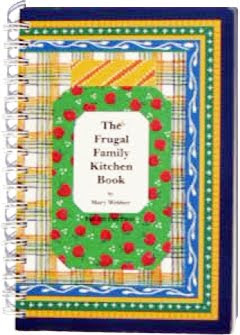Wednesday, March 1, 2006
The Many Purposes of Planting Flowers
Last week we talked about choosing varieties of vegetables for your garden beginning with a look at the purpose for which you're growing each veggie. For example, you'd grow different potatoes for winter-keeping than you might for new potatoes to enjoy fresh out of the garden.
It's the same with flowers; with so, so many possibilities you might want to consider your purposes in growing them too. I'm a strong believer in inter-mxing veggies and flowers, both for the bnefits of companion planting and for the sweet scent and visual beauty of such a garden. Companion planting, growing different plants near each other to benefit one or both of them, can be very useful for certain veggies. We've always inter-planted marigolds with tomatoes and nasturiums amongst the vine crops for pest control. There are many, many other mutally beneficial combinations that you may want to explore too.
Other reasons for growing specific flowers may include attracting bees, birds, butterflies and other wildlife, for hanging pots and patio planters, for cut flowers of course, and for craft uses such as dried or pressed flowers, potpourri, papermaking, soapmaking and more. Many flowers are grown as screening, some as supports for other plants, some to define an area or pathways, and of course many are grown just for their showy display.
Let me give you a few examples. Buddleias, which are fairly fragile in Maine winters, are a must for the bees and butterflies. I buy these plants as transplants, treating them really as annuals, although I do mulch them heavily and have been rewarded with multiple seasons for some of them.
Sunflowers at the back of a bed may support morning glories or even the miniature pumpkins. They can also be planted to support pole beans very nicely. Because I grow most of my flowers for cutting, I need a variety of textures, shapes, and shades of the usual colors. I've found flowers I loved and thought would be wonderful for bouquets only to discover that they are too dainty to hold their own in a bouquet, they are too delicate, or sometimes that their vase life is too limited. On the other hand, dahlias, asters and zinnias are old reliables.
So, just as with the vegetables, before you become absoltuely overwhelmed with those gorgeous pictures in the seed catalogs, think about your planting purposes, make a list, then fit the best varieties into your garden this summer. AND, with both veggies and flowers, keeping a notebook from year to year is essential, an invaluable aid for remembering those specific plants you loved and those you loathed.
Mary
March 1, 2006
Subscribe to:
Post Comments (Atom)


1 comment:
I love your Kitchen Book. This afternoon I made biscuits using Bakewell Cream. They were so light and fluffy.
Alice
I am a former bank teller in Yarmouth.
Post a Comment